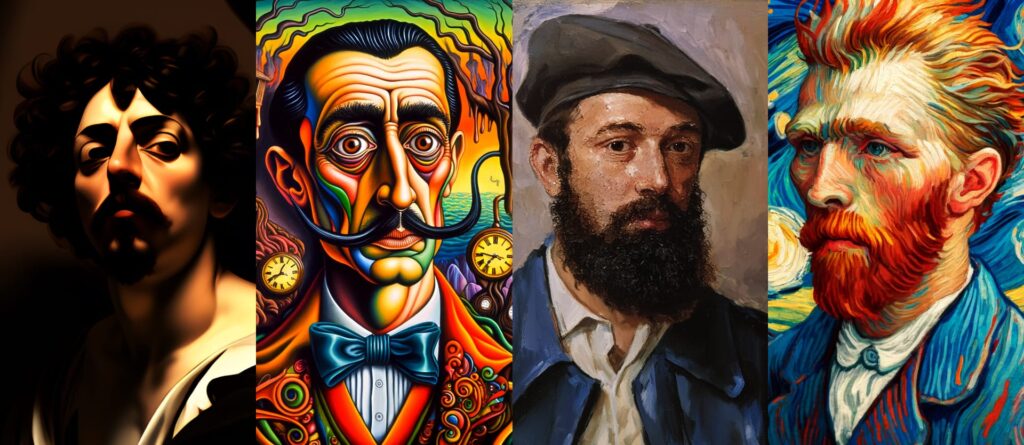With text-to-image generation powered by Adobe’s Firefly AI model, the most recent version of Photoshop from the company aims to revolutionize the creative process for a large number of customers. With this new feature, generative AI capabilities can now be significantly advanced by allowing users to produce images directly within Photoshop using textual descriptions. This functionality works similarly to other state-of-the-art AI technologies like DALL-E and Midjourney, and it was initially hinted at in April. With just a little descriptive text input, users may create intricate graphics using Photoshop’s recently enhanced AI tool.
A variety of challenges, such as “Dramatic low angle view of a steamship from the 1800s in a storm with large waves and lightning,” were tested as I experimented with this new tool. I also applied numerous artistic styles, such as anime, watercolor, sketch, and realistic. The outcomes demonstrated the AI’s capacity to generate useful images that correspond with the given descriptions, and they were very amazing.
While the generated images were generally satisfactory, there were some noticeable quirks and oddities, particularly in intricate details. These minor imperfections are typical of AI-generated art, reflecting the current limitations of the technology. However, the ability to make adjustments and refine the images within Photoshop provides a significant advantage, allowing users to correct and enhance their creations with familiar tools.
Before this update, Photoshop’s Generative Fill feature was primarily used to modify existing images by adding, extending, or removing elements. The addition of text-to-image generation represents a substantial expansion of Photoshop’s capabilities, enabling users to create entire images from scratch based on text prompts. Adobe’s Erin Boyce highlighted the efficiency this feature brings to the creative process, noting that it drastically reduces the time required to translate an idea from imagination to digital canvas. This advancement is a testament to Adobe’s ongoing efforts to streamline the creative workflow and make it easier for users to bring their ideas to life.
The Firefly Image 3 model, which powers this new feature, has been the subject of considerable controversy within the artistic community. The backlash stems from concerns about Adobe’s terms of service, which some creators interpreted as granting Adobe the right to use their work for training its AI models. This interpretation led to fears that Adobe might exploit artists’ work without proper compensation or consent, fueling significant criticism.
In response to this backlash, Adobe has taken steps to address these concerns and clarify its position. The company has reiterated its commitment to a “creator-friendly AI” approach, assuring users that it does not use customer content to train its AI models. Adobe has emphasized its adherence to principles of accountability, responsibility, and transparency in its AI ethics framework. This commitment aims to reassure creators that their work will not be misused in the development of generative AI technologies.
In addition to the recently released text-to-image capability, Adobe has made a number of additional significant improvements to Illustrator and Photoshop. One of the most important updates to Photoshop is the “Enhance Detail” feature, which allows for more accurate and detailed image enhancements, complementing the Generative Fill tool. This new feature increases the precision and quality of information produced by AI, increasing its applicability across a range of industries.
Additionally, Illustrator has undergone a number of improvements aimed at giving consumers more creative options. For example, based on textual descriptions, designers can add complex vector details to designs using the Generative Shape Fill function. By using AI, this application simplifies the process of creating intricate vector images, enabling designers to more easily accomplish their intended outcomes. The Enhanced word to Pattern function, which enables users to create personalized vector patterns from word prompts, is another noteworthy improvement. This feature offers more freedom in design creation by simplifying the process of producing original patterns and designs.
Adobe has introduced a Mockup tool in Illustrator, which facilitates the creation of high-quality visual prototypes. This tool allows users to visualize how their artwork will appear on real-life objects, such as product packaging. The Mockup feature provides a realistic representation of designs, making it easier for designers to present their work to clients and stakeholders. Enhanced selection capabilities and other improvements have also been incorporated, further refining the design process and enhancing overall functionality.
With these upgrades, Adobe’s creative toolkit has undergone a substantial metamorphosis, which is indicative of the company’s continued dedication to incorporating cutting-edge AI technologies into its offerings. Adobe is giving users strong tools to improve their creative workflows by introducing text-to-image generation and other AI-powered functionalities. Together, these developments should simplify the design process and open up new possibilities for productivity and creativity in Illustrator and Photoshop. These tools will be crucial in determining the direction of digital art and design as they develop further.
If you like the article please follow on THE UBJ.
